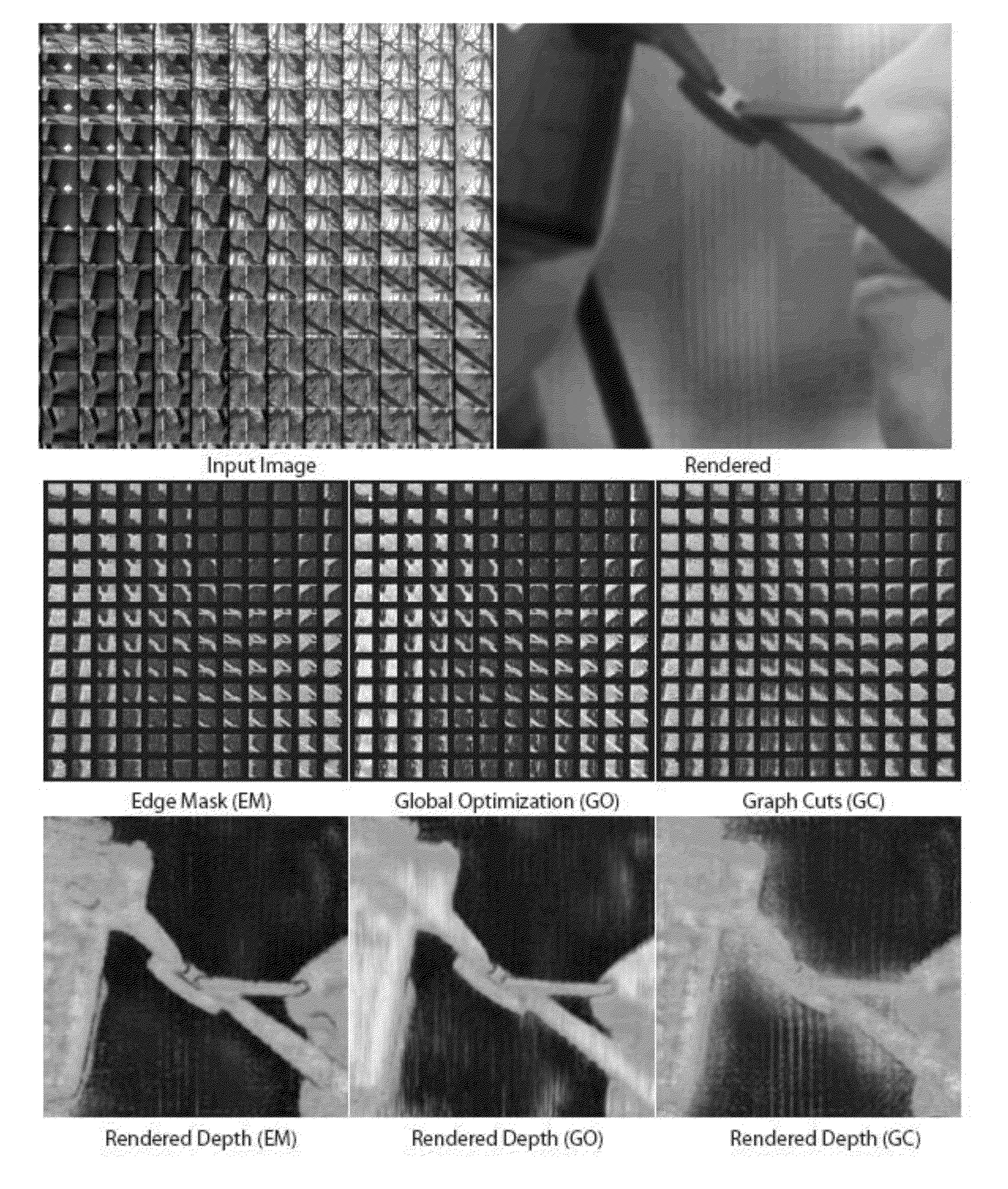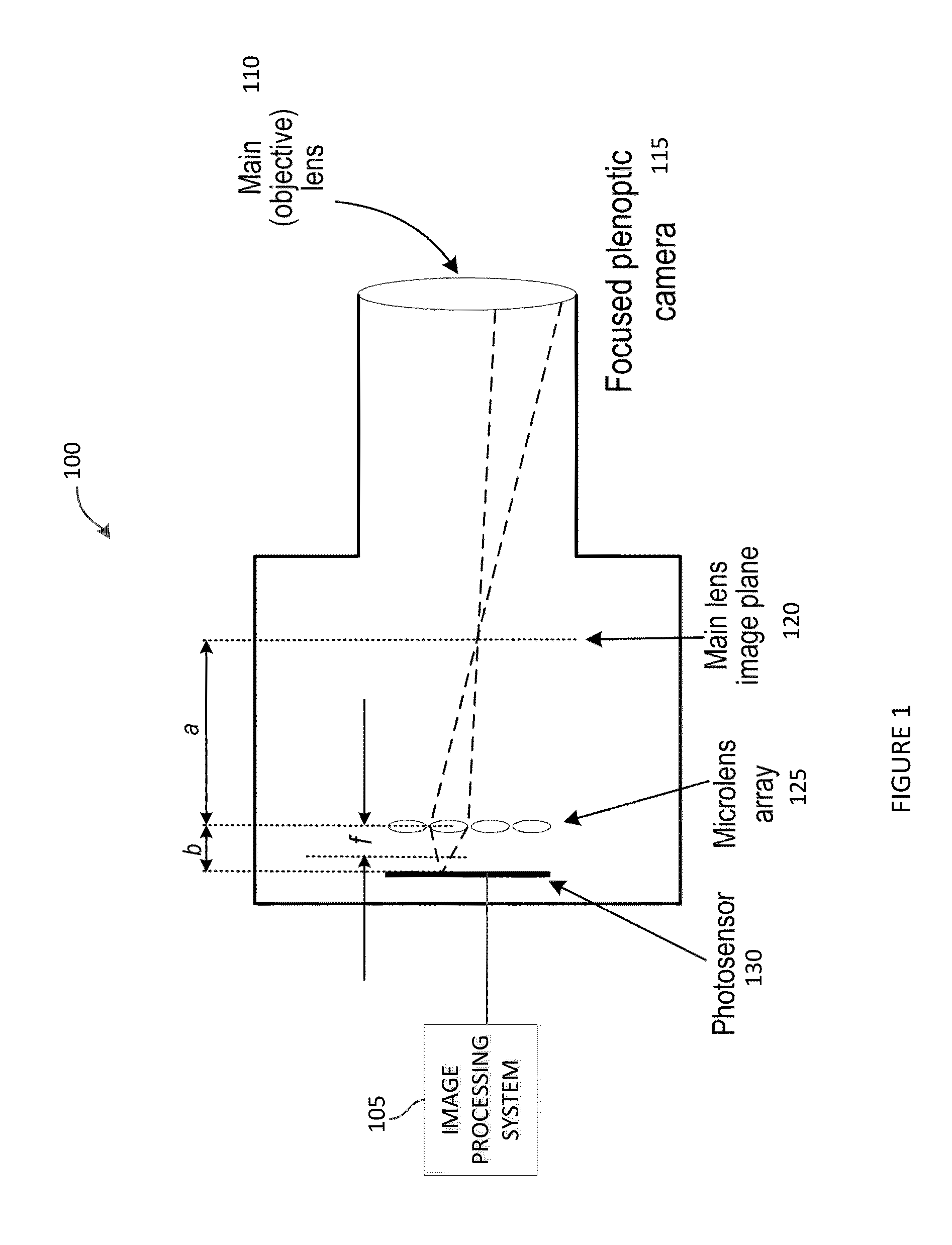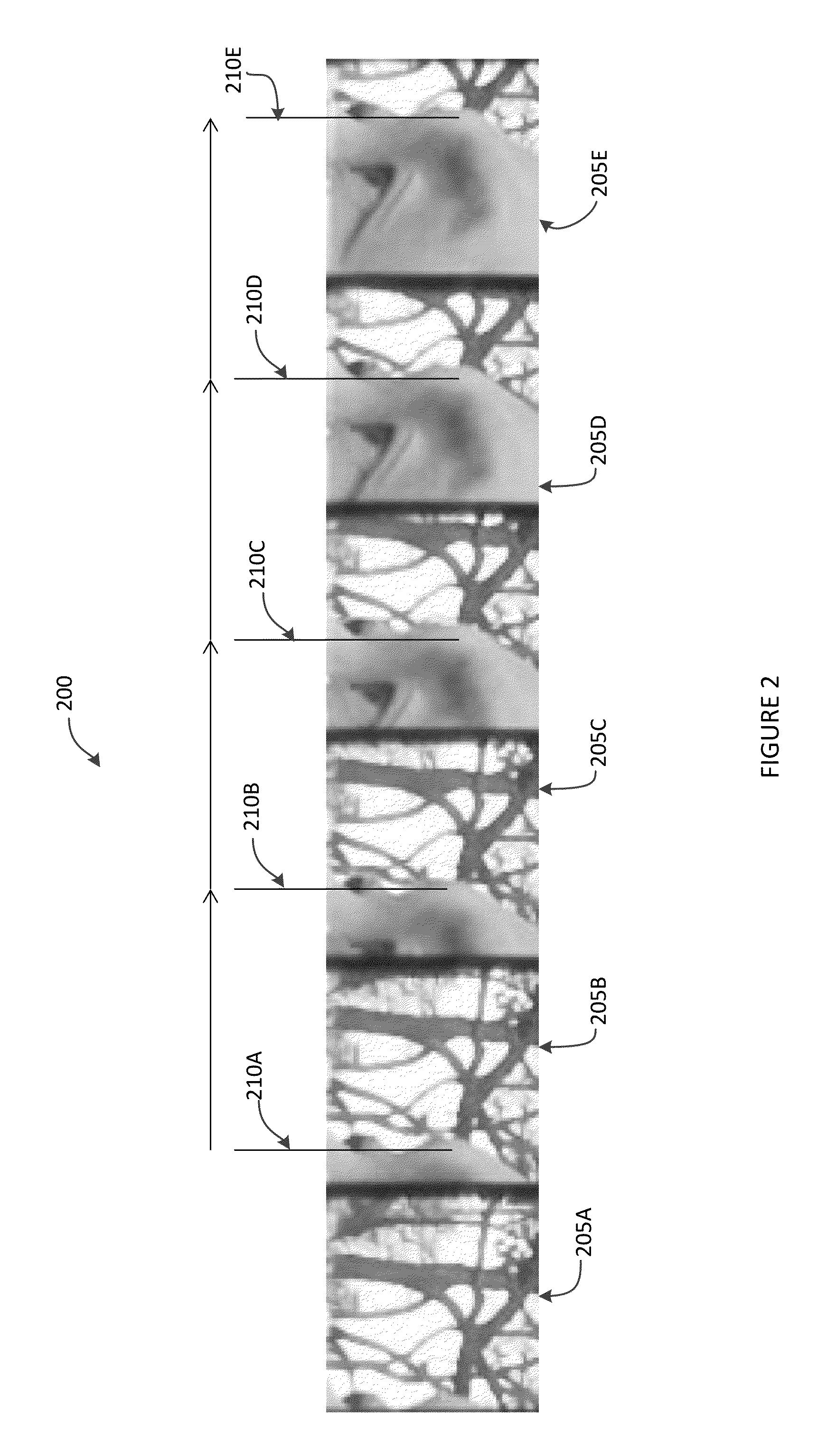Method and apparatus for generating plenoptic depth maps
a plenoptic depth map and depth map technology, applied in image analysis, image enhancement, instruments, etc., can solve the problems of 700700 images having visible artifacts at occlusion boundaries, and images generated from the camera still suffer from a low resolution of one megapixel
- Summary
- Abstract
- Description
- Claims
- Application Information
AI Technical Summary
Benefits of technology
Problems solved by technology
Method used
Image
Examples
Embodiment Construction
[0021]Embodiments of the invention relate to systems and methods of capturing images with a plenoptic camera having a relatively small number of views. In some cases, the plenoptic camera may be part of a cellular telephone, and thus size constrained to fit within a compact package. These embodiments can produce a refocusable high resolution final image by generating a depth map for each pixel in the sparse set of views captured by the plenoptic camera. However, as discussed above, when using images that are captured from a plenoptic camera with multiple views, one obstacle to recovering a high-resolution pixel depth map is occlusions that are formed when pixels from one view are occluded in another view. This may happen, for example, when one view captures a pixel from the blue sky, but in another view that same pixel is occluded by a tree branch. To robustly resolve these pixels to a particular depth in a depth map, embodiments of the invention analyze the behavior of pixels in su...
PUM
 Login to View More
Login to View More Abstract
Description
Claims
Application Information
 Login to View More
Login to View More - R&D
- Intellectual Property
- Life Sciences
- Materials
- Tech Scout
- Unparalleled Data Quality
- Higher Quality Content
- 60% Fewer Hallucinations
Browse by: Latest US Patents, China's latest patents, Technical Efficacy Thesaurus, Application Domain, Technology Topic, Popular Technical Reports.
© 2025 PatSnap. All rights reserved.Legal|Privacy policy|Modern Slavery Act Transparency Statement|Sitemap|About US| Contact US: help@patsnap.com



